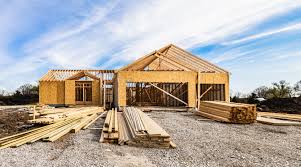When a landlord receives a new tenant, they have several important duties and responsibilities to ensure a smooth and lawful transition. First and foremost, the landlord must provide a safe, clean, and habitable living space that complies with local building, health, and safety codes. This includes making sure heating, plumbing, electrical systems, and smoke detectors are fully operational.
A written lease or rental agreement should be provided, clearly outlining the terms and conditions of the tenancy, such as rent amount, payment due dates, duration of the lease, and rules regarding the property. The landlord is responsible for reviewing the lease with the tenant to ensure mutual understanding before signing.
At move-in, landlords should conduct a walk-through inspection with the tenant to document the condition of the unit. This helps avoid disputes over damage or wear-and-tear at the end of the lease. Providing a copy of this inspection report, along with keys and any necessary building access instructions, is essential.
Landlords must also ensure the unit is ready for occupancy on the agreed-upon date. If utilities are the landlord’s responsibility, they must be connected and working. If utilities are the tenant’s responsibility, the landlord should provide necessary information for activation.
In some jurisdictions, landlords are also required to provide tenants with legal disclosures, such as landlord contact information, information about pest control, or lead paint disclosures for older buildings.
Ultimately, a landlord’s responsibilities are rooted in maintaining a safe, respectful, and professional relationship with the tenant from day one.
Search
Categories
Recent posts
Tags
- a louer
- affordable apartments Toronto
- affordable housing
- affordable housing solutions Canada
- Air Filters
- air quality
- apartment
- apartment close to public transport
- apartment for rent
- apartment insurance
- appartement
- appliances
- ARTICLE
- available for rent
- background check
- bacteria
- best city to live in canada
- best healthcare
- bicycle
- bicycle path
- bike lane
- bike path
- bikes
- bill 16
- burglar
- buy a house
- buying a house
- carbon monoxide detector
- cars
- centris
- city
- cleaning
- cleaning products
- cleaning wood floors
- compact rental units
- condo
- condo association laws
- condo fees
- condo for rent
- condo insurance
- construction budget
- construction contractors
- construction cost
- credit check
- decorating room
- digital transaction
- door lock
- doors
- downtown micro apartments
- electricity
- employment verification
- energy consumption
- energy cost
- energy saving
- engineered hardwood
- fire alarm
- fire detector
- fire extinguisher
- floor
- flooring
- for rent
- For rent in Montreal
- For rent in Toronto
- For rent in Vancouver
- furniture
- gas
- healthy candles
- healthy lifestyle
- home
- house
- house for rent
- house for sale
- house garden
- house insurance
- house locks
- house plants
- immigrant
- importance of water leak detector
- indoor plants
- insurance
- intergenerational home
- intergenerational living
- interior designer
- investment
- landlord
- lease
- lease responsibility
- low crime
- mattress
- micro-apartments Vancouver
- micro-units Toronto
- mls
- move to canada
- moving company
- Moving to canada
- moving truck
- multigenerational home
- multiplex
- nano-suites
- nano-suites Toronto
- new apartment
- new color
- oil
- online house purchase
- paint colors
- passive income
- pet friendly apartment
- pet friendly plants
- planning for vacation
- plants
- porcelain tile
- property
- questions for apartment rental
- real estate
- real estate agent
- real estate broker
- real estate online
- real estate transaction
- realtor
- renal history
- rent
- rent an apartment
- rent obligations
- rental
- rental board
- rental scam
- renting
- residential income
- residential lease
- residential rental
- revenue property
- safe area
- safe candle in apartment
- safe candle in house
- safe candles
- safety
- scam
- security
- sell a house
- small apartments Vancouver
- smoke detector
- social media and real estate
- soy candle
- soy candles made with essential oils
- student apartment
- student housing
- tenant
- tiny rentals Canada
- traffic
- trending color
- trending paint
- university student rental
- ventilation
- vinyl floor
- water alarm
- water damage
- water leak detector
- window frame
- window manufacturer
- windows
- wood floors



